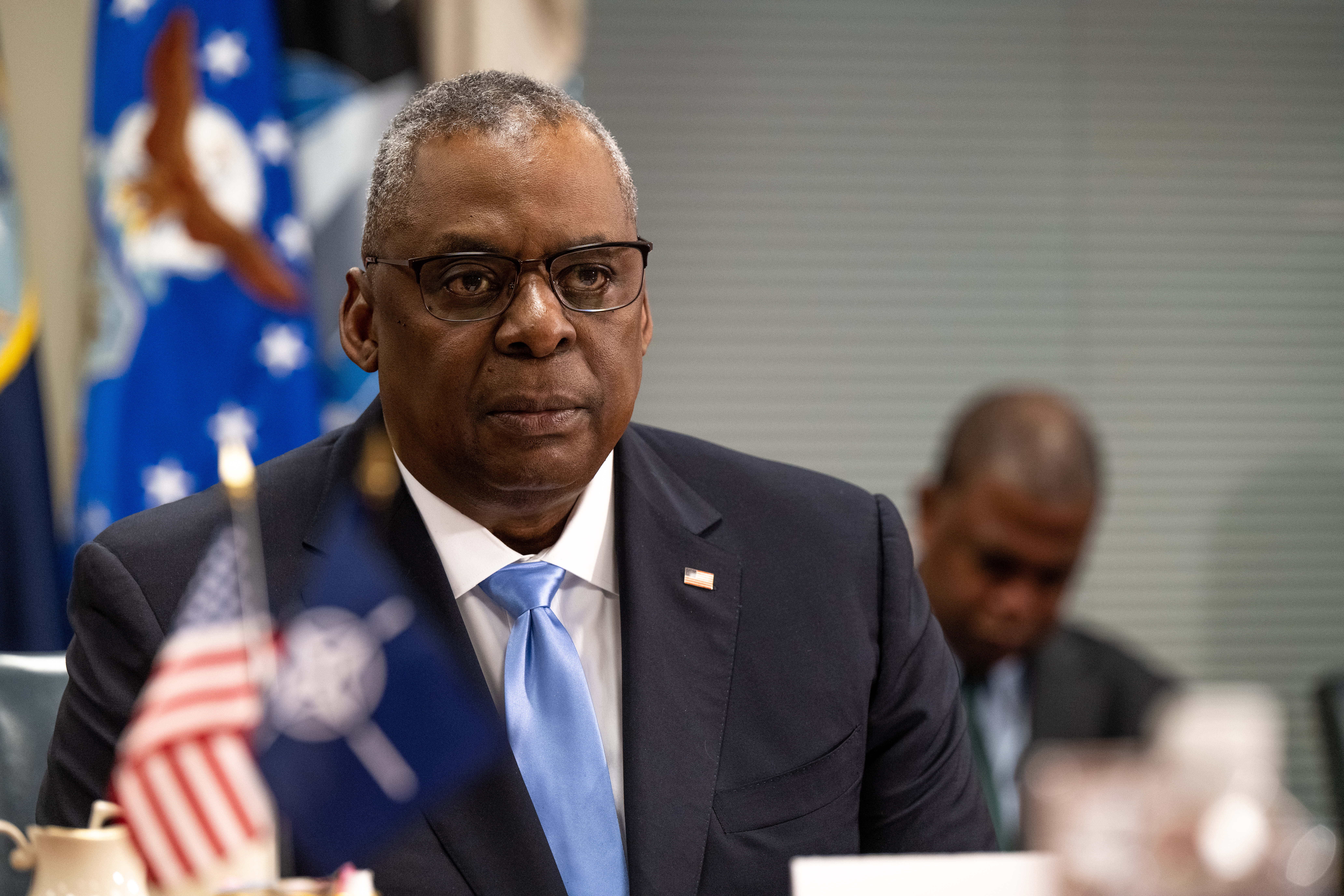Defense Secretary Lloyd J. Austin III touted “major investments” in the nuclear triad, space, and next-generation fighter aircraft—along with “once-in-a-generation” expenditures for shipyards and munitions manufacturing—in a message to the force ahead of the Pentagon’s 2024 budget release, which is anticipated in the next two weeks.
Austin’s March 2 message to Department of Defense personnel reinforced the National Defense Strategy’s emphasis on China as the nation’s pacing threat and the ongoing threat to stability posed by Russia’s war in Ukraine. He also emphasized the department’s integrated deterrence strategy and the ability to “coordinate our efforts across all warfighting domains, theaters, and the spectrum of conflict to create new and more complex dilemmas for our adversaries.”
Austin said investments to strengthen cybersecurity, long-range fires, undersea warfare, and joint all-domain command and control will feed that integrated deterrence approach to dissuade China, Russia, Iran, North Korea, and international terrorist organizations from risking war with the U.S.
China, however, presents “a generational challenge,” Austin said. In order for the U.S. to maintain its competitive edge, he said the U.S. must make a “once-in-a-generation investment in our shipyards and our munitions base, and much more,” as well as continue historic investments in defense research and engineering.
Concerns about the state of the U.S. defense industrial base are growing. Chief of Naval Operations Adm. Mike Gilday said at a Heritage Foundation event in November that uncertainty in military budgets has undermined confidence among industry, according to U.S. Naval Institute News. “No industry is going to make those kinds of investments unless we give them a higher degree of confidence,” he said.
The munitions base is struggling to keep up with demand for weapons, as the U.S. and allies send arms to Ukraine and stockpiles must be refilled.
Austin cited the need for “next-generation capabilities in fighter aircraft,” which would encompass both the Next-Generation Air Dominance program and Collaborative Combat Aircraft, essentially unmanned drones that would work alongside manned fighters as scouts, jammers, or additional strike platforms. By foregoing their own pilots and life support systems, CCAs should be smaller and less costly.
Austin also emphasized strengthening partnerships “by improving interoperability, deepening information-sharing and joint planning, and conducting more complex joint and combined exercises.” He said the U.S. can also get better at sharing among its own military services and agencies, as well as with academia.
Austin said he wants to “deepen the Department’s partnerships with America’s best universities,” as part of an effort towards “building pathways of opportunity for all qualified American patriots who choose to serve their country.”
The Air Force in particular has tried to improve the diversity of its officer corps in recent years, especially within its pilot ranks.
Austin also wants to retain those who do join up by making “significant investments to improve the quality of life for our service members, including making moves easier, strengthening childcare support, and expanding spousal employment opportunities,” he wrote. However, the secretary warned that more work is needed in the military’s mental health care and suicide prevention efforts, as well as its military housing and health systems.
“I’m honored to call each of you colleagues,” Austin concluded. “Together, we will continue to tackle the challenges of this decisive decade to meet our sacred obligation to defend the American people.”

